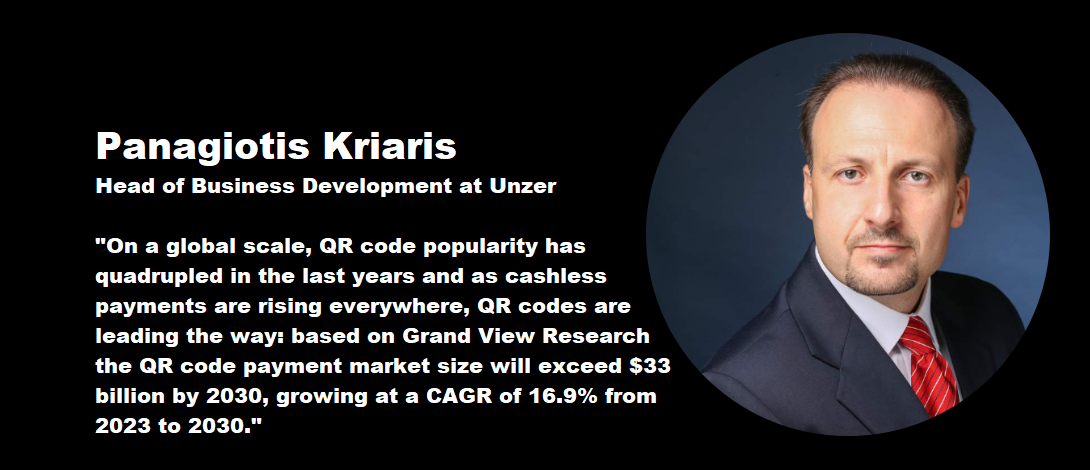
an article written by Panagitis Kriaris, Head of Business Development at Unzer
It seems odd but an array of old-fashioned looking, black and white squares invented about 30 years ago have revolutionized payments in unimaginable ways. Let’s take a look at QR code payments.
QR code stands for Quick Response code and is a type of a two-dimensional barcode that can store a large amount of information readable by digital devices. Invented in 1994 in Japan by Denso Wave, a Toyota subsidiary, they were initially used for production, tracking and shipping in the auto industry.
The widespread use of QR codes for payments traces back to China during the rise of mobile wallets (the likes of Wechat and Alipay) and their SuperApp transformation. Back then businesses were looking for creative, efficient and inexpensive ways to bypass credit cards and accept payments without costly hardware such as POS terminals, and QR codes were a perfect fit: they combined convenience with a seamless check-out experience, triggered by digital devices that were in abundance: mobile phones.
Today QR codes account for more than 90% of mobile payments in China, driven by their SuperApp integration. From commerce to housing to transportation (taxis, public transport, bikes) to entertainment and beyond everything in China can be paid for using QR codes. To such an (extreme) extend that even people asking for money on the street, do so by having a print-out of a QR code.
Depending on who produces the QR code, two models exist:
— The customer-presented, where the merchant has to scan the customer’s QR code for the transaction to be initiated
— The merchant-presented, where triggering the transaction requires the customer to scan the merchant’s QR code
The popularity of QR codes is driven by their easiness, flexibility and ability to boost new business via a plethora of use cases: from QR promo codes to dynamic QR codes that are time limited and contain contextually customized information to brick-and-mortar billboards driving traffic online, QR code payments have found particular success in markets around the globe (China and India are the frontrunners), as a means of reducing the use of cash, improving financial inclusion and enabling an alternative, low-cost payments infrastructure that can substitute (partly or wholly) card payments.
On a global scale, QR code popularity has quadrupled in the last years and as cashless payments are rising everywhere, QR codes are leading the way: based on Grand View Research the QR code payment market size will exceed $33 billion by 2030, growing at a CAGR of 16.9% from 2023 to 2030.
As QR code payments evolve there are two main levers driving transition to the next-phase – 1) efficient handling of privacy and security issues 2) interoperability both on a domestic and on a cross-border level – and 3 key areas they will be driving innovation: 1) instant payments 2) invoicing and remittances 3) the customer check-out process and experience.

Banking 4.0 – „how was the experience for you”
„So many people are coming here to Bucharest, people that I see and interact on linkedin and now I get the change to meet them in person. It was like being to the Football World Cup but this was the World Cup on linkedin in payments and open banking.”
Many more interesting quotes in the video below: